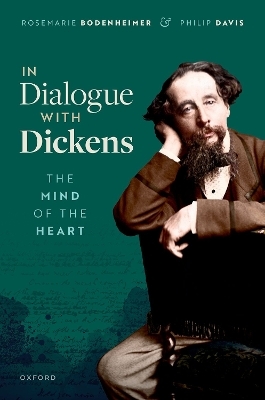
In Dialogue with Dickens
Oxford University Press (Verlag)
978-0-19-288674-3 (ISBN)
Written in the form of a back-and-forth dialogue between the two authors, this book is about the relationship between feeling and thinking in Dickens's novels. It presents Dickens as a psychological thinker, whose generative thought may be conscious, unconscious, half-conscious, or in transit between one state and another. This Dickens is always in live process, improvizing from one monthly number to the next, subtly revizing as he goes, shifting moods, tenses, and tones from one paragraph or sentence to the next, as what he writes sparks off what he suddenly, newly, thinks.
The chapters approach this inquiry through close readings of chosen passages, including studies of telling revisions in Dickens's manuscripts that reveal the power of his deepened second thoughts. They also draw on selected moments from his personal letters and prefaces when these more casual writings prove to be sketches or rehearsals for thoughts and feelings that achieve new life when they are transformed into fiction. The book concentrates on four novels of his great middle period: Dombey and Son, David Copperfield, Bleak House, and Little Dorrit, while making excursions into earlier and later Dickens novels, notably A Tale of Two Cities and Our Mutual Friend. The experiment of intense but informal conversation between the authors also models the relationship between feeling and thinking in the act of reading and responding to powerful moves in fiction.
Rosemarie Bodenheimer has been trying to get her head around Dickens since her undergraduate days. She spent her working life as Professor of English at Boston College, specializing in Victorian and modern fiction. In The Real Life of Mary Ann Evans: George Eliot, Her Letters and Fiction (1994) and Knowing Dickens (2007), she fashioned a form of biographical criticism that juxtaposes a writer's letters with published works, as mutually illuminating forms of writing. After retirement, she published in various areas, most recently Samuel Beckett in the OUP series My Reading (2022). Philip Davis was, until his retirement, Director of the Centre for Research into Reading, Literature and Society (CRILS) at the University of Liverpool, with strong interests in reading and inner being, with particular relation to emotion, memory, auto/biography, and fictional realism. His work on Victorian writing includes Memory and Writing, The Victorians volume in the Oxford English Literary History series, Why Victorian Literature Still Matters, and The Transferred Life of George Eliot. He is an editor of two OUP series: The Literary Agenda and My Reading.
Preface
Introduction
1: Mr Dombey and Mr Dickens
2: Recalled to Life
3: His Favourite Child - David Copperfield
4: After Copperfield
5: 'The Wrong Side of the Pattern' - Little Dorrit, Book 1
6: Little Dorrit between Books
7: Through the Looking-Glass - Little Dorrit, Book 2
8: 'Like a Broken Glass' - Bleak House
Part 1: Begin
Part 2: Between
Part 3: End
Afterword
| Erscheinungsdatum | 02.03.2024 |
|---|---|
| Zusatzinfo | 20 Illustrations |
| Verlagsort | Oxford |
| Sprache | englisch |
| Maße | 162 x 240 mm |
| Gewicht | 532 g |
| Themenwelt | Geisteswissenschaften ► Psychologie ► Psychoanalyse / Tiefenpsychologie |
| Geisteswissenschaften ► Sprach- / Literaturwissenschaft ► Anglistik / Amerikanistik | |
| Geisteswissenschaften ► Sprach- / Literaturwissenschaft ► Literaturgeschichte | |
| Geisteswissenschaften ► Sprach- / Literaturwissenschaft ► Literaturwissenschaft | |
| ISBN-10 | 0-19-288674-6 / 0192886746 |
| ISBN-13 | 978-0-19-288674-3 / 9780192886743 |
| Zustand | Neuware |
| Informationen gemäß Produktsicherheitsverordnung (GPSR) | |
| Haben Sie eine Frage zum Produkt? |
aus dem Bereich


